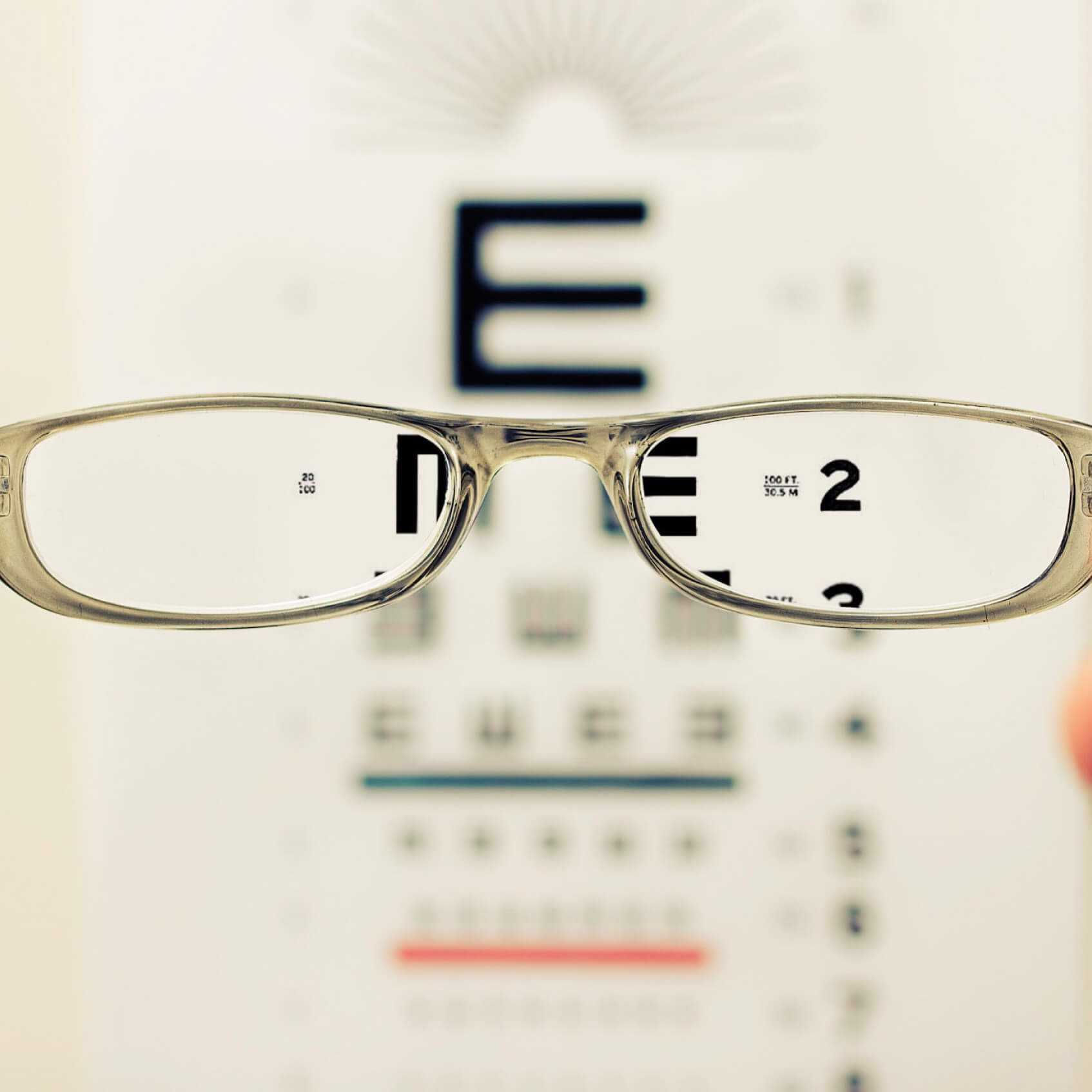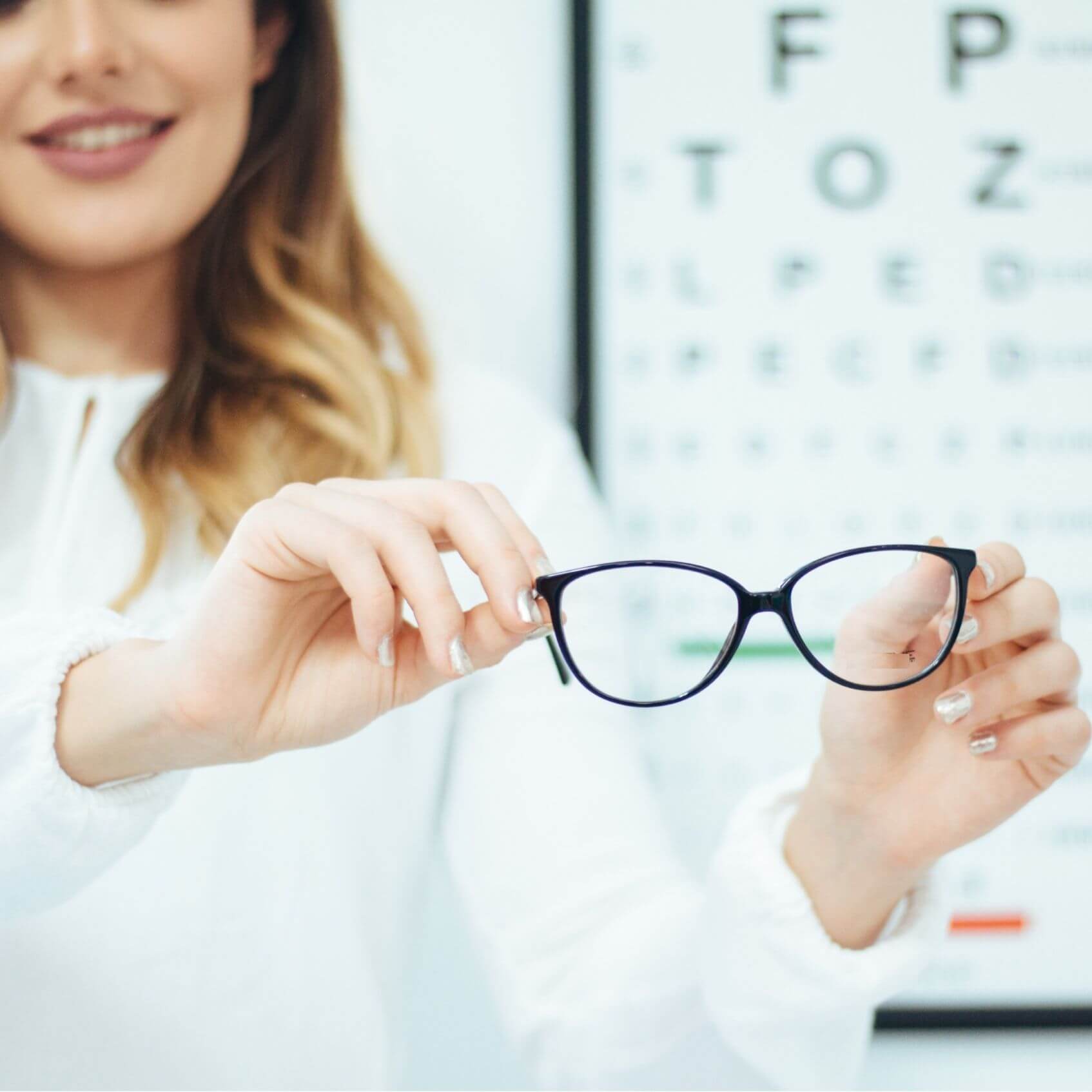If you’re in the market for a new pair of eyeglasses, you have several options to consider in terms of lens materials. Before you decide on a pair, it’s important to think about the pros and cons of each type of lens. Certain options are significantly different in weight, durability, scratch-resistance and thickness.
Of course, other factors like cost and appearance will come into play as well. You’ll also find that different types of lenses are better suited to certain prescriptions.
In this article, we’ll explain everything you need to know about plastic lenses, polycarbonate lenses and high index lenses so you can choose the most sensible option for your preferences.
What are Plastic Lenses?
Plastic lenses are the most popular type of lens, largely because they are the least expensive option. They are also fairly durable and lightweight. However, while plastic lenses are harder to scratch or break than glass lenses, other types of lenses are much more resistant to impact. Thus, you might want to look elsewhere if you tend to drop your eyeglasses quite often. Plastic lenses aren’t exactly the thinnest option on the market, either.
Additionally, it’s crucial to note that plastic lenses work best for weak to moderate prescriptions. If you have a stronger prescription, on the other hand, polycarbonate lenses or high index lenses will almost certainly give you better visual clarity.
Pros and Cons of Plastic Lenses
Pros:
- Low cost: Plastic lenses are much cheaper than polycarbonate lenses and high index lenses.
- Durable: Compared to glass lenses, plastic lenses are more impact-resistant.
- Easy to tint: Plastic lenses are easier to tint with color or coatings than other materials.
Cons:
- Thick: Though plastic lenses are thinner than glass lenses, they are thicker than polycarbonate and high index lenses.
- Low scratch-resistance: The soft material of plastic lenses makes it very vulnerable to scratches by sharp objects.
- No UV protection: Without protective coating, harmful ultraviolet light can easily pass through plastic lenses.
What are Polycarbonate Lenses?
Polycarbonate lenses are known for durability and comfort, as well as protection from sunlight. This makes them the ideal choice for children, athletes, tradesmen, or anyone who values reliability and eye health. Polycarbonate lenses can be up to 25% thinner and weigh 30% less than plastic lenses. As mentioned, polycarbonate lenses are comfortable and offer 100% protection from the sun’s ultraviolet light.
As you can imagine, these advantages come with a cost. Let’s examine the pros and cons of polycarbonate lenses so you can decide if the benefits are worth the price.
Pros and Cons of Polycarbonate Lenses
Pros:
- Durable: Polycarbonate lenses are much less likely to break than plastic and high index lenses.
- Light: Due to their light weight, polycarbonate lenses are generally more suitable for stronger prescriptions.
- 100% UV protection: The surface of polycarbonate lenses is embedded with ultraviolet protection.
Cons:
- Cost: Compared to plastic lenses, polycarbonate lenses can be twice as expensive.
- Low scratch-resistance: Polycarbonate is a soft material that is vulnerable to scratching without protective coating.
- Slight edge distortion: It can be difficult to see out of the edges of polycarbonate lenses due to the manner in which they bend light.
What are High Index Lenses?
If you have a strong prescription and don’t want to wear thick lenses, you should definitely consider high index lenses. Lighter and thinner than plastic lenses, high index lenses also have a higher refractive index than the other two options. This allows them to bend light and correct your vision without the need for more material or surface area. And thanks to their slim shape, high index lenses can be paired with virtually any style of frames.
High index lenses are not quite as durable as polycarbonate lenses, so be sure to consider the level of durability you need to match your lifestyle.
Pros and Cons of High Index Lenses
Pros:
- Appearance: High index lenses can be seamlessly incorporated into rimless eyewear or sleek metal frames.
- Thin: Say goodbye to the traditionally bulky lenses associated with strong prescriptions.
- Multiple Options: High index lenses are available in single-vision, progressive or bifocal.
Cons:
- Cost: Like polycarbonate lenses, high index lenses are more expensive than plastic lenses.
- Need protective coating: High index lenses need additional coating to block ultraviolet light.
- Less scratch-resistance: High index lenses are more vulnerable to scratches and impacts than polycarbonate lenses.
Should You Add a Lens Coating?
Different lens coatings offer more protection for your eye health as well as the lenses themselves. They can also give you better visual clarity in certain settings. Though lens coatings will increase the overall cost of your eyeglasses, the right lens coating can be tremendously beneficial for your health and increase the longevity of your glasses.
What are the Different Types of Lens Coatings?
Here are four different types of lens coatings, followed by their central purposes:
- Anti-Reflective Coating: Also known as anti-glare coating, an anti-reflective coating is highly recommended if you do a lot of night driving or have high index lenses, which are more reflective in brightly-lit environments.
- Scratch-Resistant Coating: Recommended for all lens materials, scratch-resistant coating will protect your lenses from scrapes and scratches.
- Blue Light Protective Coating: If you spend a lot of time looking at a computer screen, this coating will greatly reduce eye strain.
- UV Protective Coating: UV protective coating is recommended for plastic lenses, especially if you plan on wearing your glasses outdoors on a daily basis.
What Else Will Affect the Cost of Your New Eyeglasses?
Now that lenses and coatings are explained, there are just a few more things to consider before picking up that new pair:
- Frames: When calculating the total cost of your eyeglasses, don’t forget to factor in your preferred style of frame, whether it’s a generic or designer frame.
- Vision Insurance: The out-of-pocket price of your eyeglasses may be significantly lower if you have vision insurance.
Is Your Prescription Up to Date?
If you have not had an eye exam in more than a year, it’s highly recommended to schedule an appointment before buying a new pair of eyeglasses. Wearing an outdated prescription can be just as harmful as not wearing eyeglasses.
An outdated prescription will eventually cause vision problems. Schedule an eye exam right away if you experience any of the following:
- Blurred Vision
- Eye Strain
- Frequent Headaches
- Constant Squinting
VC Vision Can Help You Select the Right Lenses
With so many factors to consider, choosing the right pair of eyeglasses can take time. At VC Vision, we are happy to simplify this process and help you find a pair of eyeglasses that accounts for your prescription, budget, insurance and style preferences.
Noticed any changes in your vision or eye health? We can also perform a comprehensive eye exam, set you up with a new prescription and have a new pair of eyeglasses in your hands in under an hour. All you have to do is call (817)-200-4333 or schedule an appointment online, which takes just a few minutes. We look forward to hearing from you!


